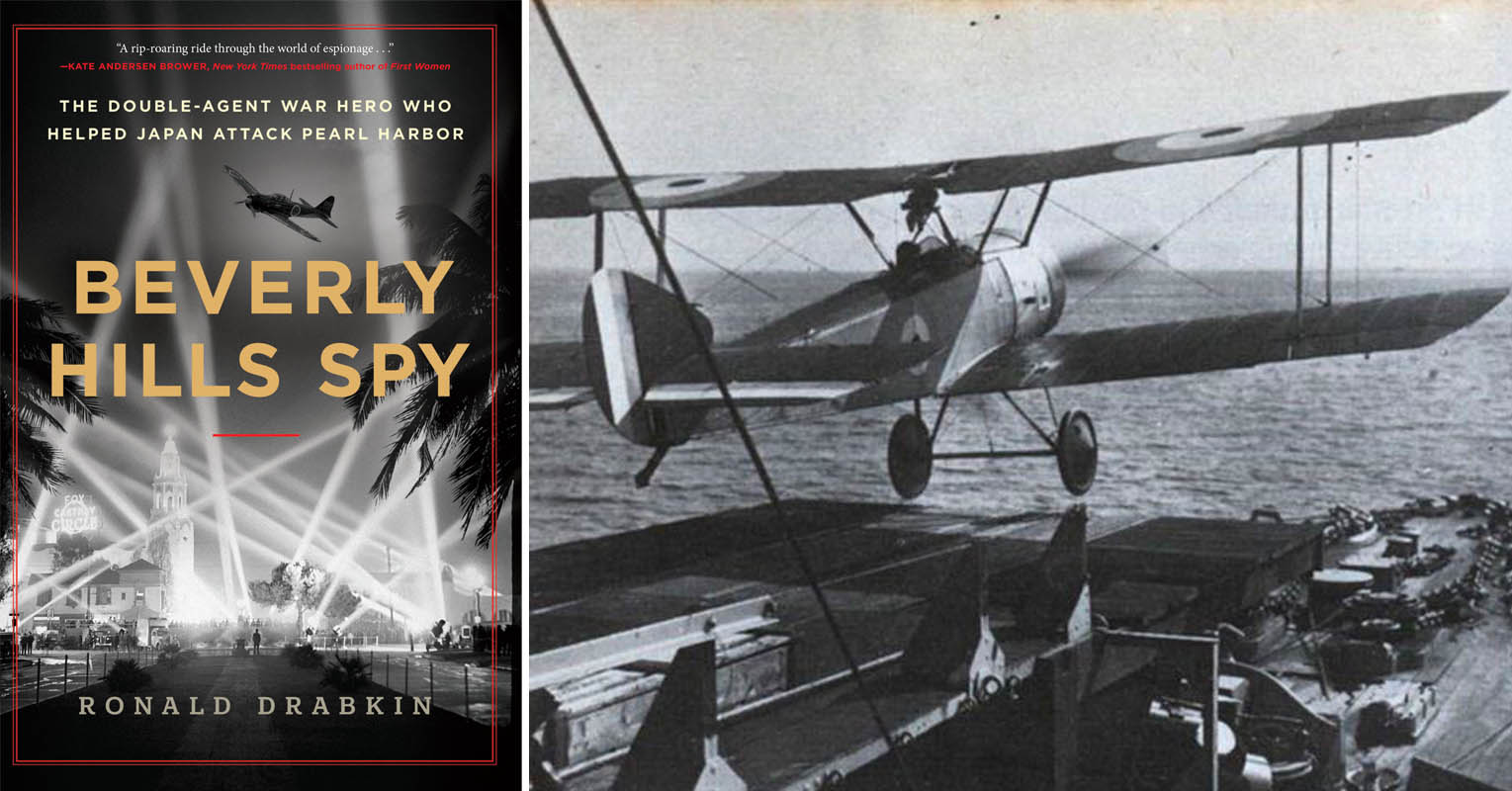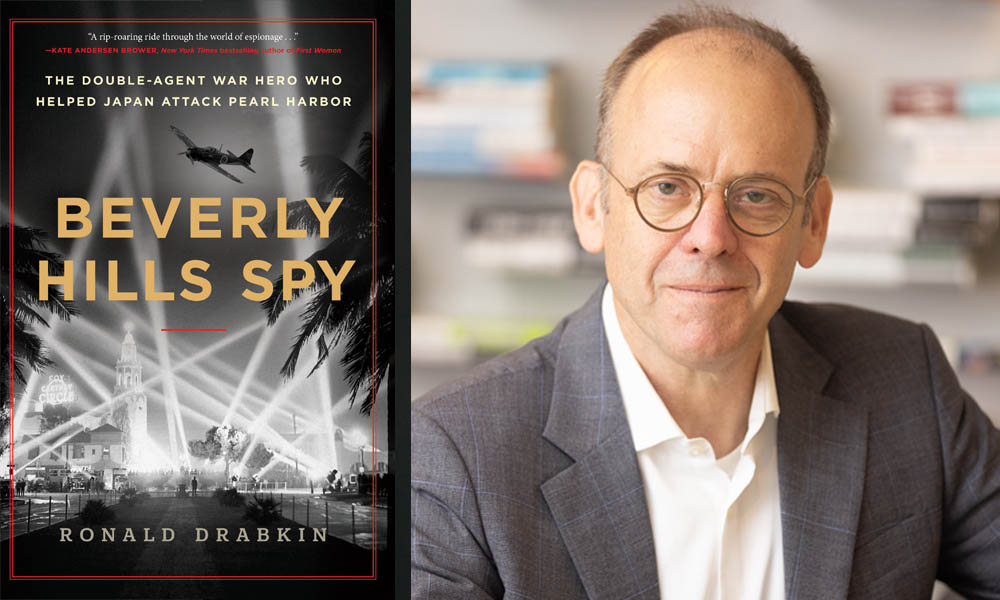Writer and author Ronald Drabkin was born into the secret world of spies. Drabkin’s father had a vague-sounding job, and in retrospect, all the signs were there, but it was not until after his father died that the truth came to light. Ronald discovered, among the papers left behind, that his father worked in counterintelligence for the U.S. Army in the 1950s chasing around communists in the Los Angeles area, and that his grandfather had also been “in the business.”
Also within the papers was the forgotten story of Frederick Rutland, a debonair British World War I aviation hero who turned double agent and helped Japan bomb Pearl Harbor, Was Rutland a traitor? An opportunist who got too caught up? All this, and how it unfolded, is the fascinating subject of Beverly Hills Spy which will be published by William Morrow, an imprint of Harper Collins on February 13. Join us for a candlelit literary salon and launch party for Beverly Hills Spy on February 21st!
Much like investigating a crime, writing a narrative non-fiction book is about pulling at threads, and Drabkin patiently unraveled the tale which kept coming closer and closer to his own family history. Beverly Hills Spy recounts the rise and fall of “Rutland of Jutland”, as Rutland was dubbed in World War I following his brave rescue of a wounded sailor during the Battle of Jutland. Rutland was also the first pilot to ever take off from an aircraft carrier in battle.
Rutland was the son of an impoverished day laborer, but he had smarts and was also incredibly savvy with machinery—especially radios—and put all his energies into becoming a pilot and an officer. He was the real deal—one of the best pilots in the Navy who could also fix or improve everything in an airplane. After Jutland, he helped the Royal Navy design a new aircraft carrier.
Though Rutland rose through the ranks quickly in the Royal Navy, he found the postwar years difficult after a transfer to the R.A.F.. As “Rutland of Jutland,” he was a decorated hero who was introduced to the King of England and a newspaper sensation. His superiors in the R.A.F. were less interested in daring escapades, particularly from someone who did not come from the upper crust of British society like them. They found him too low-class, too unpredictable, too iconoclastic for their taste. In short, not “one of them.”
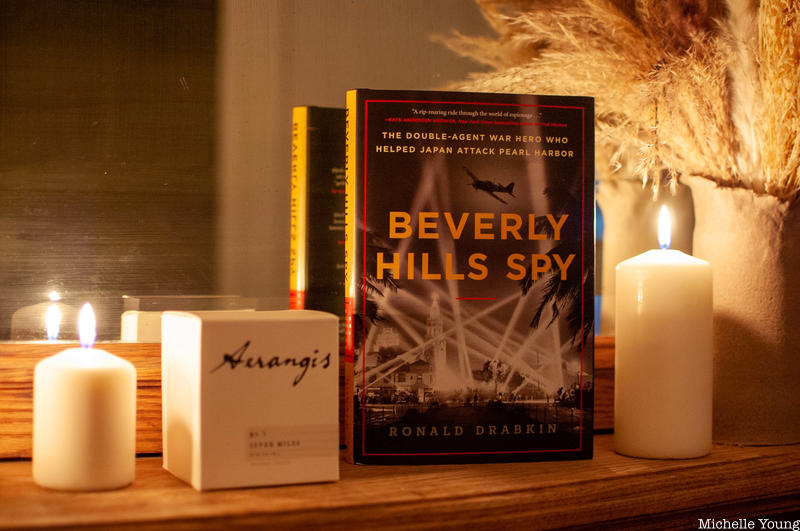
A disgruntled former war hero with financial problems was the perfect recruit for the Japanese Navy, who needed someone who blended in and was willing to take risks to feed them information as tensions between Japan and the United States increased. By the 1930s, Rutland was advising the Japanese on aircraft technology, living beyond his means in style in Los Angeles, and brushing shoulders with Charlie Chaplin, Errol Flynn, John Barrymore, and Amelia Earhart. Even Yoko Ono makes a brief appearance, albeit as a baby. Rutland passed on information on U.S. military activity and technological advances in airplane design to Japan and relocated his entire family from England to Los Angeles for the job. He was paid by Japan exceptionally well for his “advice,” earning ten times more than the highest-paid admiral in the Royal Navy.
To research the story, Drabkin filed a Freedom of Information Act request to access Rutland’s FBI files and was likely one of the first people outside the bureau to ever see those documents. In addition, his research with MI5 and the Japanese Naval archives provides context to just how important (and sometimes perplexing) Rutland’s role was in the lead-up to World War II. Beverly Hills Spy is an engrossing, page-turner that is told within the dramatic backdrop of World War II buildup and the history of modern spy craft. One of the most impressive aspects of the book is the plethora of dialogue, which makes the story feel incredibly alive and present.
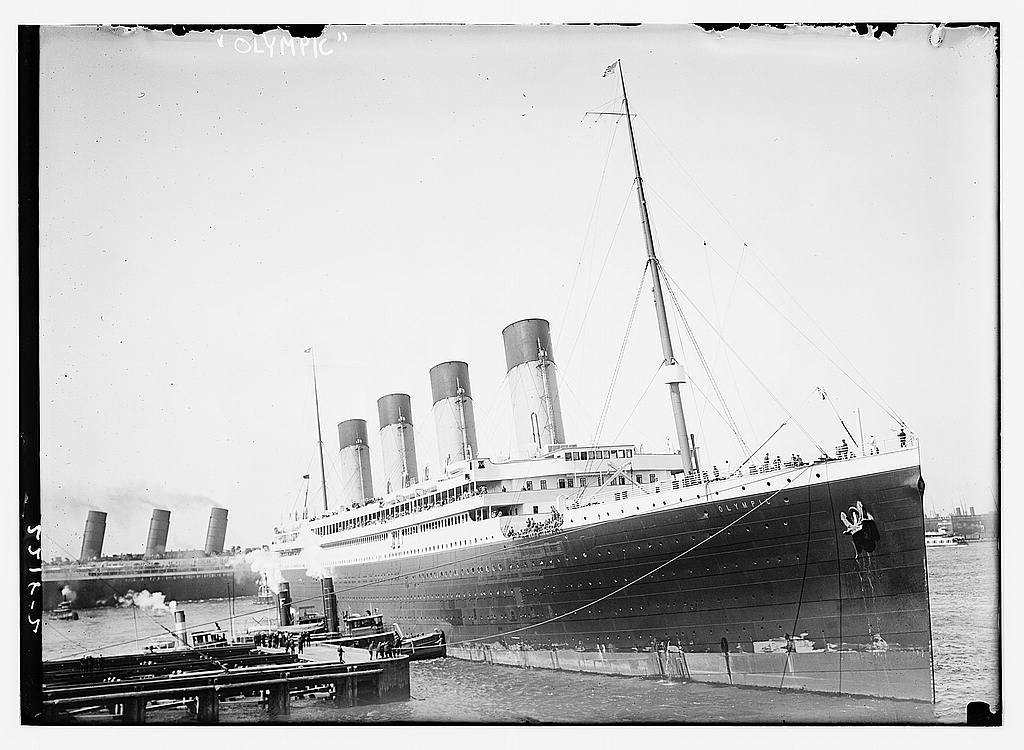
And for all our New York-based readers, Rutland’s story has a fascinating New York City connection. In late summer 1933, Rutland and his family—his wife Dorothy, their two children, and a nanny, boarded the RMS Olympic, a sister ship to the Titanic, and headed to New York. He was first detained by customs officials on arrival for smuggling in unlicensed opals and pearls with unpaid customs duties but was released once he paid the taxes off. The family stayed at the Hotel Tudor (now the Westgate New York City Hotel), a newly-opened 600-room luxury hotel in Tudor City just next to the United Nations and down the street from Grand Central.
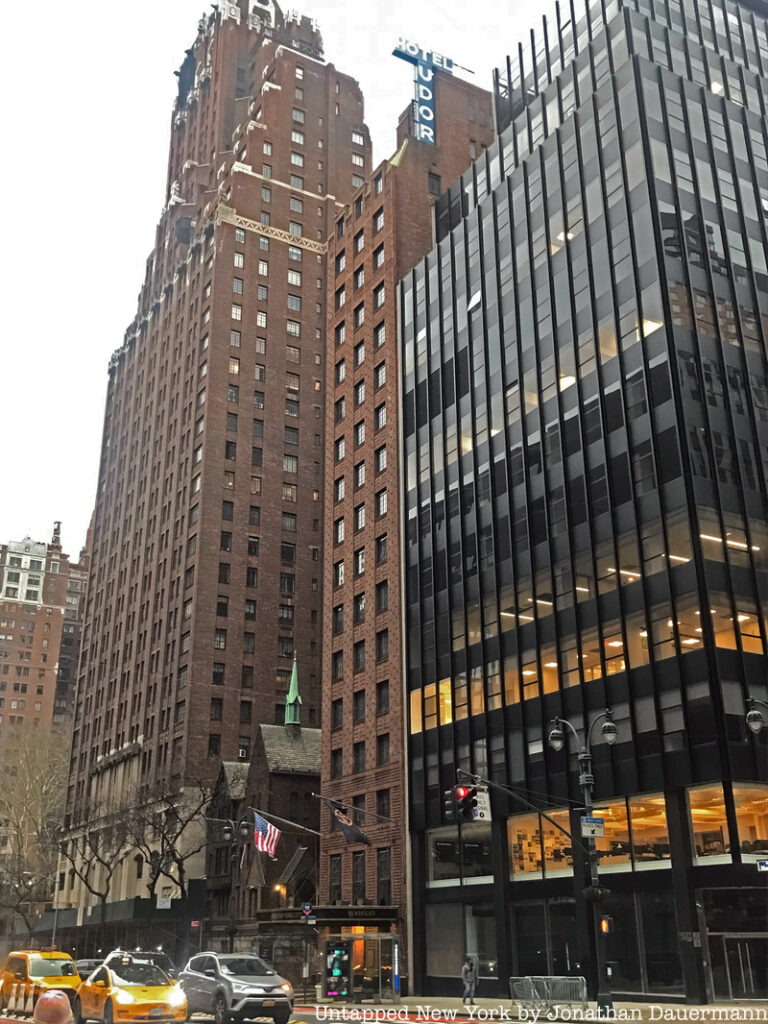
He went to spy at the Brooklyn Navy Yard, and other navy yards in Boston, Washington D.C., and Newport News taking photographs and notes for the Japanese Navy. He was also busy with potential lucrative deals operating under his cover identity as the proprietor of a trading company. As Drabkin tells me, “He also was doing some gem smuggling and was trying to work with the Mikimoto store on Fifth Avenue and that was when Mr. Mikimoto himself was working there.” From New York, the family went to Los Angeles where Rutland began to live a double life, entertaining lavishly and spying for the Japanese.

To learn more about Frederick Rutland’s story, join the book launch party for Beverly Hills Spy at The Lit Salon on February 21, in person or virtually! You can also pre-order an advanced copy of the book here.






